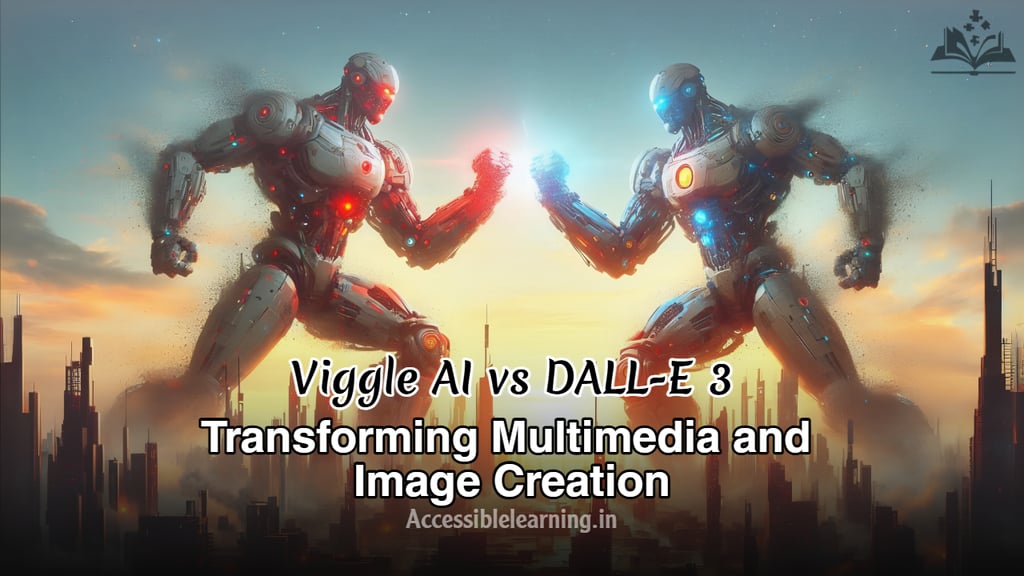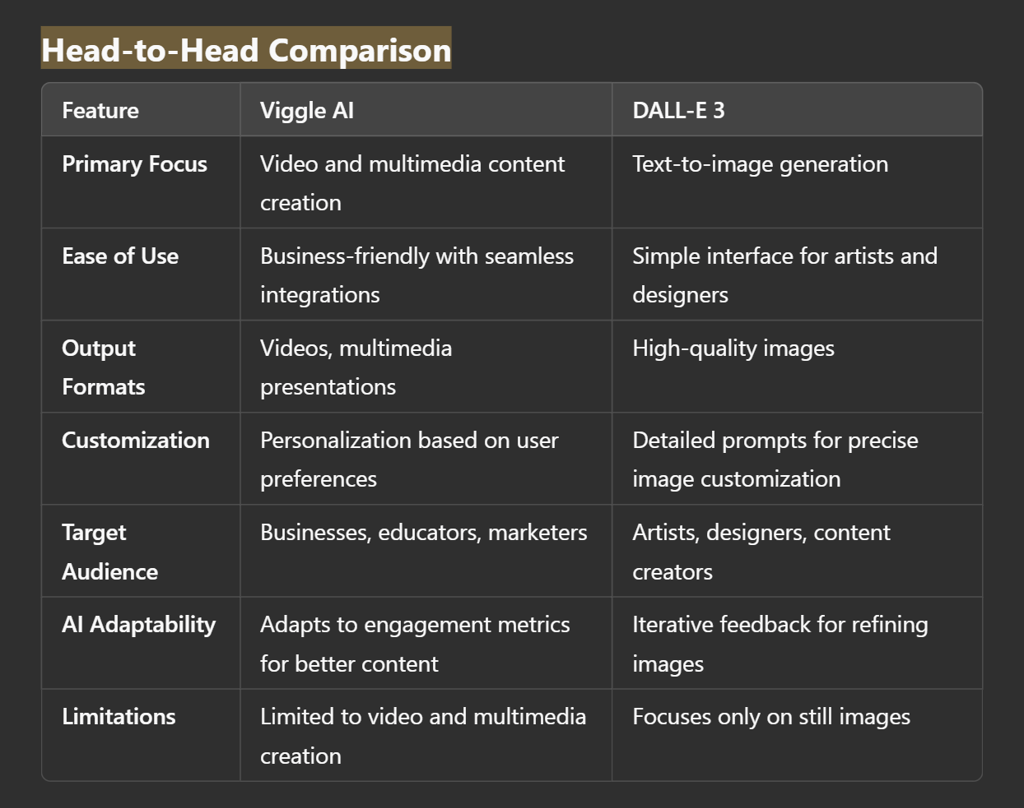
The Creative Showdown: Viggle AI vs DALL-E 3!
Explore the ultimate comparison between Viggle AI and DALL-E 3, two leading AI tools revolutionizing multimedia and image creation. Discover their features, strengths, limitations, and ideal use cases to determine which suits your creative needs best.
AI/FUTUREEDITOR/TOOLSAI ART TOOLSARTIST/CREATIVITYEDUCATION/KNOWLEDGE
Sachin K Chaurasiya
12/24/20243 min read


Artificial Intelligence (AI) has ushered in a new era of creativity, enabling unprecedented capabilities in generating images, videos, and multimedia content. Viggle AI and DALL-E 3 are two standout tools in this space, each offering unique functionalities for different use cases. While Viggle AI is more focused on personalized multimedia experiences, DALL-E 3 excels in generating high-quality images based on textual prompts. Let’s dive deeper into their features, strengths, and use cases to help you choose the right tool for your needs.
Viggle AI
Introducing Viggle AI is a revolutionary multimedia tool that harnesses advanced AI technology to empower personal and business content creation. By combining machine learning, natural language processing, and predictive analytics, Viggle AI generates personalized, engaging, and interactive video content.
Viggle AI’s primary focus lies in generating interactive and engaging video content, enabling users to:
Create Personalized Content: Viggle AI leverages user data and preferences to produce tailor-made videos for marketing campaigns and customer engagement.
Dynamic Video Editing: It offers features like automatic scene transitions, audio synchronization, and real-time content adaptation.
Seamless Integrations: Businesses can integrate Viggle AI into their existing workflows, enabling automated content production for websites, apps, and social media platforms.
Key Features
Interactive Video Generation: Enables the creation of multimedia content with clickable elements and dynamic transitions.
AI-Driven Analytics: Tracks user engagement to refine future content.
Targeted Use Cases: Ideal for businesses focused on customer engagement, education, and entertainment.
Strengths
Business-Centric Features: Tailored for businesses that require frequent multimedia content.
Personalization: Leverages user preferences to create engaging and dynamic videos.
Interactive Capabilities: Supports clickable and adaptive video elements for enhanced user interaction.
Advanced AI Models: Employs state-of-the-art neural networks to improve video quality and interactivity.
Limitations
Limited focus on static visuals or photorealistic outputs.
May require more setup time compared to simpler tools like DALL-E 3.
Lacks extensive support for artistic content beyond video.
Use Cases
Marketing Campaigns: Businesses can use Viggle AI to create personalized ads and promotional videos.
Education: Ideal for creating engaging e-learning content and tutorials.
Entertainment: Generates interactive multimedia experiences for apps and games.
Corporate Training: Offers tools for producing customized training videos.


DALL-E 3
DALL-E 3, an evolution of OpenAI’s image generation technology, takes text-to-image creation to unparalleled heights. It’s designed for users who need detailed, high-quality visuals based on descriptive prompts, making it a go-to tool for artists, designers, and content creators. DALL-E 3’s strength lies in its ability to:
Generate Photorealistic Images: Produce hyper-detailed visuals that are indistinguishable from real photographs.
Understand Complex Prompts: DALL-E 3 can interpret nuanced descriptions, ensuring that every detail in the prompt is reflected in the final image.
Enhance Creativity: Artists and creators can use it to prototype ideas or create unique artwork with minimal effort.
Key Features
Advanced Text-to-Image Capabilities: Superior understanding of context and descriptions.
Customization Tools: Allows users to fine-tune images through iterative feedback.
Wide Use Cases: Suitable for industries like publishing, advertising, and design.
Strengths
Hyper-Detailed Image Creation: Excels in creating photorealistic images and artistic visuals.
Ease of Use: Intuitive interface with detailed prompt interpretation.
Creative Freedom: Ideal for rapid prototyping and artistic experimentation.
Accessibility: Can be used by both amateurs and professionals to generate high-quality visuals.
Limitations
Limited to image generation; lacks video or multimedia capabilities.
Requires precise prompts to achieve desired results, which can be challenging for beginners.
Use Cases
Art and Design: Perfect for artists seeking inspiration or generating unique visuals.
Advertising: Helps agencies produce high-quality images for branding and campaigns.
Publishing: Supports the creation of book covers, illustrations, and editorial visuals.
Game Development: Assists in generating concept art and in-game assets.


Which One Should You Choose?
Choose Viggle AI if you prioritize dynamic and interactive video content, especially for business or educational purposes. It’s a robust tool for creating engaging, multimedia-rich experiences that can be customized to target specific audiences.
Choose DALL-E 3 if your focus is on generating stunning, photorealistic images or artistic visuals. Its ability to interpret complex prompts and deliver exceptional quality makes it ideal for designers, artists, and content creators.
Both Viggle AI and DALL-E 3 represent the cutting edge of AI-driven creativity, each excelling in its domain. While Viggle AI is a powerhouse for personalized multimedia content, DALL-E 3 sets the benchmark for text-to-image generation. By understanding your goals and the strengths of these tools, you can leverage the right AI to transform your creative projects and achieve impactful results.
Subscribe To Our Newsletter
All © Copyright reserved by Accessible-Learning Hub
| Terms & Conditions
Knowledge is power. Learn with Us. 📚


